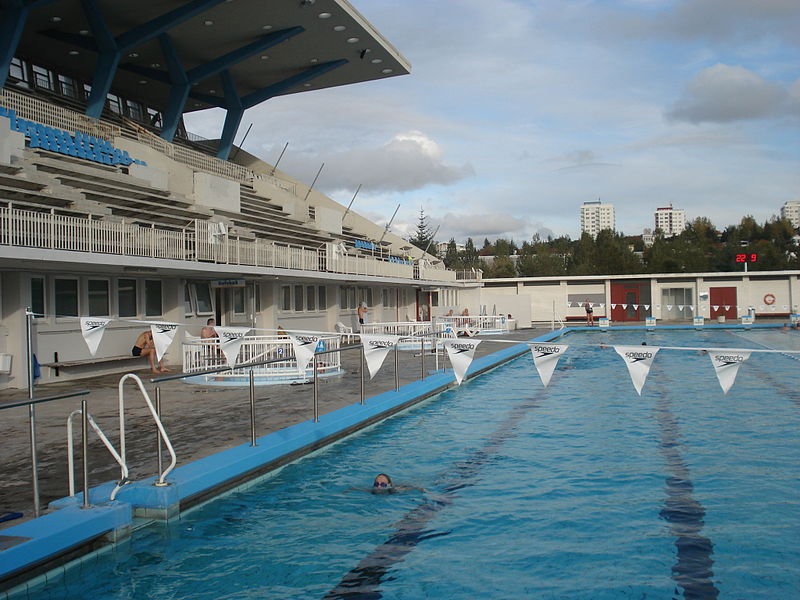Laugardalslaug Travel Guide

Laugardalslaug is a swimming and sports complex with Iceland’s largest pool. It is located in the capital city, Reykjavík.
Learn about the local area and explore more of the city on a tour of Reykjavik.
Photo above from Wikimedia, Creative Commons, by Ohlen. No edits made.
Facilities at Laugardalslaug
Laugardalslaug has many facilities for the enjoyment of locals and visitors alike. It is best known for its Olympic sized pool, its naturally heated hot tubs and thermal pools. There is also a paddling pool and a children’s pool, and a cold seawater pool.
Health and wellbeing treatments and therapies are available on site. There is also a well-equipped gymnasium and a mini golf course. In summer, there are also volleyball courts.
The pool has disabled access, and there are several options for food available. There is also a shop, where you can purchase swimwear and towels, and free Wifi throughout the complex.
Entrance is 980 ISK for adults, 160 ISK for those six to seventeen, and free for those under six or over sixty seven. It can, however, be entered for free if you have a Reykjavík City Card.
These cards grant you access to many of the capital’s most popular sites, and discounts at many more museums, shops, restaurants and attractions.They can be bought to be used over a period of 24, 48 or 72 hours.
Like in all Icelandic pools, you will be required to shower naked before entering, and most of the showers are public. This is not considered taboo in Iceland, and is for the purposes of everybody's hygiene.
Getting to Laugardalslaug
 Photo from Wikimedia, Creative Commons, by Ian. No edits made.
Photo from Wikimedia, Creative Commons, by Ian. No edits made.
Laugardalslaug is easy to reach from the centre of Reykjavík. It can be reached by foot if you are willing to walk for approximately forty minutes. Otherwise, the buses 12 and 14 both reach it, leaving from Hlemmur, the central bus station.
It can also be driven to, and has a large car park.
Laugardalslaug sits within Laugardalur park. This is a lovely recreational area, with wide green spaces, a sports field, a botanical gardens, and the Family Park and Zoo, where guests can see some of Iceland’s animals, such as reindeer, Arctic Foxes and seals.
History of Laugardalslaug
Laugardalslaug sits over the hot springs that gave Reykjavík its name; Reyjka means ‘Smoky’, and ‘Vík’ means bay. These hot springs have always played an important role for the city, being where people would bathe and wash clothes.
The main street in the city, Laugavegur, means ‘the way of the water’, as it was up this road that women would take their laundry from Reykjavík to these springs in the settlement’s earliest days.
The area was not utilised for leisure, however, until the modern era. Designed by architect Einar Sveinsson, it was built in 1968. Since then, it has only grown in popularity, now welcoming nearly two million people a year.
Einar Sveinsson is responsible for much of Reykjavík’s appearance through the years he was working, which were quite numerable; he was the City Architect of Reykjavík for almost four decades, until 1973. His style was very functionalist, and though he was criticised for some for overspending on his projects, they have stood the test of time and needed no more than routine maintenance.
Attractions Nearby
Popular categories

Download Iceland’s biggest travel marketplace to your phone to manage your entire trip in one place
Scan this QR code with your phone camera and press the link that appears to add Iceland’s biggest travel marketplace into your pocket. Enter your phone number or email address to receive an SMS or email with the download link.


















